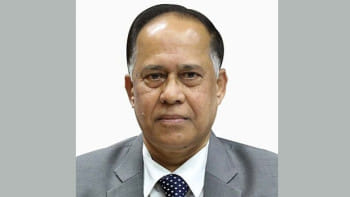What the IMF said, our economists have said before

Almost a hundred years ago, a prominent Congress leader, Gopal Krishna Gokhale, commented that what Bengal thinks today, India thinks tomorrow. Similarly, it can be argued that what Bangladeshi economists have been saying for a long time is pretty much what the International Monetary Fund (IMF) has told our central bank and the government. But it is only after the IMF said so that our government has started listening.
The basic principles of economics are the same no matter who mentions them first. But our finance ministry – highly concerned with political agendas – trashed the suggestions when they came from our economists. The Bangladesh Bank, too, followed the finance ministry's footprint because of its lack of independence. The ministry didn't stop there. Rather, it produced opposing theories overnight, which are often ironic and have never been heard before in the field of economics.
One of their peculiar theoretical inventions is that the nine percent cap on lending rates need not be lifted to tame inflation, while all sensible countries in the world have raised their lending rates to put a brake on private credit growth – knowing that it will be recessionary. Our ministry justifies the nine-percent cap as investment augmenting to deliver more growth and employment. It is adding fuel to the fire of inflation, which is already above the 10-percent mark. Ironically, the last budget statement describes combating inflation as its number one priority. Then, why is there such a contradiction between its target and its action?
The non-market high rates on sanchayapatra (savings certificates) have been validated multiple times by the finance ministry over the last decade to hide its fiscal incapacity. It's the biggest national charity for pampering the super-rich in the name of supporting the vulnerable segment of our society. A Prothom Alo report from October 10 shows how painful it is for widows to get the income from sanchayapatra, which requires tax papers from them – in a country where the tycoons are notorious for dodging taxes every day.

If sanchayapatra rates are above the lending rate, wouldn't that create an opportunity for unethical arbitrage? Just borrow at nine percent and save at 11 percent. The government may not know how many business magnates are taking advantage of this loophole. But the ministry is sticking to its self-spawned theory.
The budget of FY2012 suddenly claimed that investment is not that sensitive to interest rates. Of course, interest rates don't matter to the habitual defaulters with political clout. But small and medium enterprises must take the cost of interest rates into account before investing in their businesses. In the face of declining remittances, the ministry introduced the so-called 2.5 percent incentive on the dollar's value and claimed that remitters responded to it effectively. But there is no authentic research to validate this claim.
The policy prescriptions that the IMF suggested mainly include: i) removal of the interest rate caps of nine and six percent; ii) floating the exchange rate and getting rid of multiple exchange rates; iii) proper accounting of foreign exchange reserves; iv) correcting abnormal rates on sanchayapatra; and v) improving fiscal capacity. Bangladeshi economists have been calling for these measures incessantly. But the finance ministry turned a deaf ear to all of them.
Bangladesh witnessed another strange spectacle when the planning minister announced the monthly inflation figures. Inflation is a matter of concern for the central bank and for the commerce ministry. It has nothing to do with the planning ministry, which is supposed to deal with long-term plans.
One morning, the planning minister proclaimed that inflation figures would be announced on a quarterly basis instead of a monthly basis, defying all good practices across the world. While all countries are trying to give more information to help the public and policymaking, ours is moving backwards. Intentionally hiding unpleasant figures cannot fool people who have some common sense.
The same is happening when it comes to monetary policy announcements – which have suddenly moved from taking place biannually to annually, the opposite of what other countries are doing. Countries like Vietnam and Pakistan announce monetary policies at least four times a year, while India does it six times, and the US every six weeks. The IMF has now advised the government to make it biannual again.
When ministries intend to provide data less frequently, it may imply that the data quality is low, and that they want to hide it. The need for quarterly GDP data has always been emphasised by economists. One statistics officer at the Bangladesh Bank once brought to my notice a project to upgrade the data quality by increasing GDP data frequency on a quarterly basis. I thought it was important and tried to convene a meeting with the finance ministry – without much success. Now, the IMF has again instructed to make it quarterly.
India moved to announcing its GDP quarterly since the mid-1990s, and Pakistan has also started doing the same. We brag about being ahead of India and Pakistan on many counts, but the quality of our data is atrocious compared to global standards. Economists always question when ministries publish data, particularly those concerning growth, unemployment, and inflation. The IMF has reiterated the same point. Fortunately, our government can't turn down the IMF's suggestions the way it does when it comes from our economists.
Dr Birupaksha Paul is a professor of economics at the State University of New York at Cortland in the US, and former chief economist at Bangladesh Bank.

 For all latest news, follow The Daily Star's Google News channel.
For all latest news, follow The Daily Star's Google News channel. 











Comments